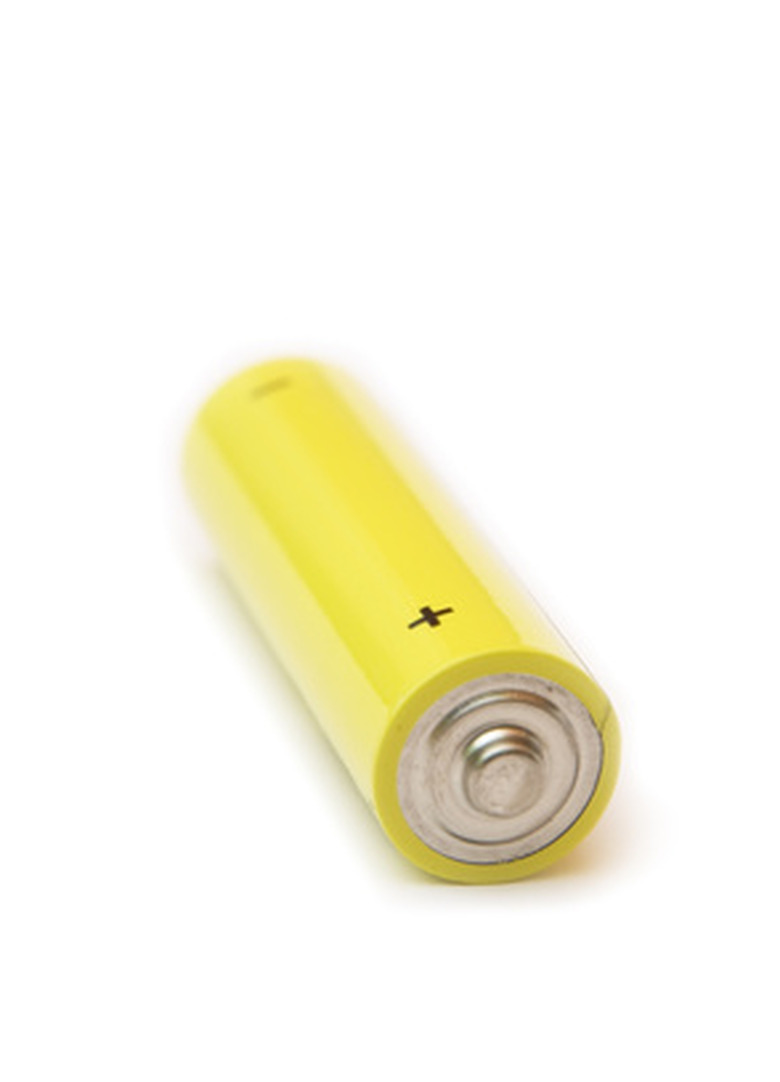How To Connect Two LiPo Batteries
Lithium polymer batteries (often abbreviated as LiPo) were originally designed for devices such as cell phones and laptops. They are now often used by enthusiasts who fly model planes or sail model boats. This is because LiPo batteries are very light compared with other types of batteries. Each battery output is in the region of 3.7 volts. There are two methods to connect two LiPo batteries: parallel and series. Parallel maintains the same voltage but doubles endurance; series doubles the voltage but the endurance remains the same as having one battery. It's easy to connect two LiPo batteries.
LiPo Batteries in Parallel
Step 1
Line the LiPo batteries next to each other so you can easily connect them. Each battery has a clearly marked positive (+) and negative (-) terminal.
Step 2
Connect a wire to the negative terminal of the first LiPo battery, then connect the other end to the negative terminal of the second LiPo battery.
Step 3
Connect a wire to the positive terminal of the first LiPo battery, then connect the other end to the positive terminal of the second LiPo battery
Step 4
Connect a second wire to the negative terminal of the second LiPo battery. This will connect to the unit you intend to power. Connect a second wire to the positive terminal of your second LiPo battery. This will also connect to the unit you intend to power.
Step 5
Check that you have wired the LiPo batteries in parallel correctly and the wires are secure.
Step 6
Connect the loose wires attached to the second LiPo battery to the negative and positive terminals of the unit you want to power. You have connected two LiPo batteries in parallel and doubled their endurance.
LiPo Batteries in Series
Step 1
Line up the LiPo batteries you want to connect so they are close together with the terminals facing the same way. Each battery has a clearly marked positive (+) and negative (-) terminal.
Step 2
Connect a wire to the negative terminal of your first LiPo battery, then connect the other end to the positive terminal of your second LiPo battery.
Step 3
Connect a wire to the positive terminal of your first LiPo battery. This will connect to the unit you want to power.
Step 4
Connect a wire to the negative terminal of your second LiPo battery. This will connect to the unit you want to power. Check that you have wired your LiPo batteries correctly and the wires are secure.
Step 5
Connect the loose wire, attached to the negative terminal of your first LiPo battery, to the negative terminal of the unti you want to power. Connect the loose wire, attached to the positive terminal of your second LiPo battery, to the positive terminal of the unit you want to power. Your two LiPo batteries are connected in series.
Things Needed
- Two LiPo batteries
- Wire
Warning
LiPo batteries should be handled with great care. Use according to the manufacturer's instructions. Keep away from heat. Do not overcharge. Make certain you do not connect the wires incorrectly, as you may damage the batteries.
When the batteries need charging, disconnect them and charge separately unless you have the correct charging unit specific to the way you have connected them (parallel or series). It is dangerous to connect two different types of battery such as LiPo and NiCad.
Cite This Article
MLA
Benham, Stephen. "How To Connect Two LiPo Batteries" sciencing.com, https://www.sciencing.com/connect-two-lipo-batteries-7278192/. 24 April 2017.
APA
Benham, Stephen. (2017, April 24). How To Connect Two LiPo Batteries. sciencing.com. Retrieved from https://www.sciencing.com/connect-two-lipo-batteries-7278192/
Chicago
Benham, Stephen. How To Connect Two LiPo Batteries last modified March 24, 2022. https://www.sciencing.com/connect-two-lipo-batteries-7278192/
